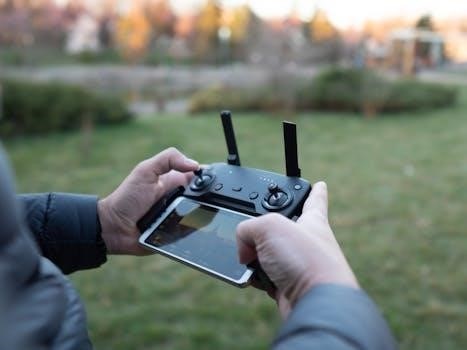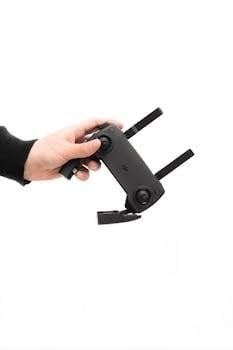
JS Bull Ebike Controller Manual⁚ A Comprehensive Guide
If you’re an ebike enthusiast or owner of a JS Bull ebike, understanding its controller is crucial for optimal performance and safety. This guide aims to demystify the JS Bull ebike controller, providing a comprehensive overview of its features, operation, and troubleshooting. Navigating its complexities can feel daunting, especially for newcomers.
Understanding the JS Bull Ebike Controller
The JS Bull ebike controller serves as the brain of your electric bicycle, managing various functions and ensuring smooth operation. It regulates the motor’s power output, battery usage, and overall system performance. Understanding its role is the first step in optimizing your ebike experience.
These controllers, often manufactured by Jiangsu Wuxi Bull Technology, come with different specifications, such as voltage (36V/48V/52V), current limits (10A-20A), and motor phase angles (60° or 120°). Knowing these parameters is essential for proper configuration.
The controller interacts with other ebike components like the motor, battery, and display panel. Some controllers, like the JsBull XGB, offer multiple modes for varying riding conditions. Familiarizing yourself with the controller’s wiring diagram and connections is crucial for installation and troubleshooting. Many users seek information on parameter settings, but finding specific details can be challenging, even on the manufacturer’s website. This guide aims to bridge that information gap and provide a comprehensive overview of the JS Bull ebike controller.
Key Features and Functions of JS Bull Controllers

JS Bull ebike controllers are designed with several key features to enhance the rider’s experience. One primary function is managing motor speed and power output, ensuring efficient energy consumption and optimal performance. They often include multiple riding modes, such as eco, normal, and sport, allowing riders to adjust the level of assistance based on their needs and preferences.

Another vital feature is battery management, protecting the battery from overcharging, over-discharging, and short circuits. This extends the battery’s lifespan and ensures safe operation. Furthermore, JS Bull controllers typically incorporate various sensors to monitor parameters like motor temperature and wheel speed, providing real-time feedback to the rider.
Some models, like the JsBull XGB, offer advanced features such as regenerative braking, which recovers energy during deceleration and returns it to the battery. They may also include customizable settings for parameters like current limit and motor phase angle, enabling fine-tuning of the ebike’s performance. Understanding these features and functions is essential for maximizing the benefits of your JS Bull ebike controller.
Parameter Settings for Jiangsu Wuxi Bull Controllers
Adjusting parameters on your Jiangsu Wuxi Bull controller can optimize your ebike’s performance. However, proceed cautiously, as incorrect settings can negatively impact efficiency or even damage components. Accessing parameter settings usually involves a specific sequence on the display panel or a connection to a computer via a programming cable, if supported by your specific model.
Key parameters often include voltage settings (36V/48V/52V), current limits (10A-20A), and motor phase angle (60°/120°). Setting the correct voltage is critical for compatibility with your battery. Adjusting the current limit can affect acceleration and top speed, but exceeding the motor’s or battery’s capacity can cause overheating or damage.
The motor phase angle determines the timing of the motor’s magnetic fields; incorrect settings can lead to reduced efficiency or motor malfunction. Some controllers also allow adjustments to pedal assist levels, throttle response, and regenerative braking intensity. Always consult the specific manual for your Jiangsu Wuxi Bull controller for detailed instructions and recommended settings. Experiment with caution and document your changes so you can revert if needed.
Troubleshooting Common Issues
When your JS Bull ebike controller malfunctions, systematic troubleshooting is essential. Begin by checking basic connections⁚ ensure the battery is fully charged and securely connected, and inspect all wiring for damage or loose connections. A multimeter can help verify voltage and continuity.
If the motor doesn’t respond, check the throttle and pedal assist system (PAS) sensors. Inspect the throttle cable for damage, and ensure the PAS sensor is properly aligned and functioning. Error codes displayed on the display panel can provide valuable clues; consult the manual for their meaning and corresponding solutions. Common issues include motor cutoff, erratic performance, or complete system failure.

If the controller overheats, reduce the load on the motor and ensure adequate ventilation. A faulty motor, damaged wiring, or incorrect parameter settings can also cause overheating. If problems persist, consider replacing the controller with a compatible model. Remember to disconnect the battery before working on any electrical components. If you’re not comfortable troubleshooting electrical issues, consult a qualified ebike technician. Document all troubleshooting steps and results for future reference.
Wiring Diagram and Connections
Understanding the wiring diagram for your JS Bull ebike controller is crucial for proper installation and troubleshooting. The diagram illustrates how various components, such as the battery, motor, throttle, display, and sensors, connect to the controller. Typically, the wiring includes power (positive and negative), motor phase wires, hall sensor wires, throttle signal, display communication, and optional connections for lights or other accessories.
Carefully identify each wire’s function before making any connections. Incorrect wiring can damage the controller or other components. Pay close attention to the colors of the wires and their corresponding terminals on the controller. Ensure all connections are secure and properly insulated to prevent short circuits; Use appropriate connectors and crimping tools for reliable connections.
When connecting the motor phase wires, you may need to experiment with the order to ensure the motor runs in the correct direction. If the motor runs backward, simply swap any two of the three phase wires. Refer to the JS Bull controller manual for the specific wiring diagram and color codes relevant to your model. If you are unsure about any connection, seek assistance from a qualified ebike technician. Always disconnect the battery before working on the wiring.
JS Bull XGB Controller Information
The JS Bull XGB controller is a specific model of ebike controller manufactured by Jiangsu Wuxi Bull Technology Co., Ltd. This controller is designed to regulate the power delivery from the battery to the motor, controlling the speed and performance of the electric bicycle. Key specifications often include the operating voltage (e.g., 36V, 48V, or 52V), current limit (e.g., 10A-20A), and motor phase angle compatibility (e.g., 60°/120°).
The XGB controller typically supports multiple operating modes, allowing riders to choose between different levels of assistance; It may also feature various protection mechanisms, such as over-voltage protection, over-current protection, and temperature protection, to safeguard the controller and other components from damage. Wiring information for the XGB usually includes connections for power, motor phases, hall sensors, throttle, and display.
When working with the JS Bull XGB controller, it’s essential to refer to the specific manual for that model. The manual will provide detailed information on the controller’s features, parameter settings, wiring diagram, and troubleshooting tips. Note that Jiangsu Wuxi Bull Technology Co. Ltd product might be labeled as JsBull XGB. Consulting the proper documentation ensures correct setup and operation.
Finding Manuals and Documentation
Locating the correct manual and documentation for your JS Bull ebike controller is crucial for proper setup, operation, and troubleshooting. Start by checking the manufacturer’s website, Jiangsu Wuxi Bull Technology Co., Ltd. Often, manufacturers provide downloadable manuals in PDF format for their various controller models. Search using the specific model number, such as “JS Bull XGB” or any other identifier printed on the controller itself.
If the manufacturer’s website doesn’t yield results, try searching online ebike forums and communities. Other users may have already located or shared the manual you need. Include specific details in your search query, such as the voltage, current rating, and any other identifying marks on the controller.
Another avenue is to contact the ebike vendor or retailer from whom you purchased the bike. They may have access to the relevant documentation or be able to contact the manufacturer on your behalf. When contacting support, provide as much detail as possible about your ebike and controller. Remember that some manuals for similar controllers from other brands (like those for Bosch systems found on Bulls ebikes) might offer useful general information, but always prioritize the JS Bull specific documentation.
Display Panel Operation (Impulse 2.0 Example)
Understanding the display panel is key to effectively using your JS Bull ebike. While specific displays vary, the Impulse 2.0 serves as a good example. Typically, the display shows vital information such as battery level, current speed, assist level, and trip distance. Familiarize yourself with the button functions – usually power, assist up, and assist down.
To power on, press and hold the power button. Use the assist buttons to adjust the level of motor assistance. Higher assist levels provide more power but drain the battery faster. The display might also feature a walk assist mode, activated by holding a specific button. This helps when pushing the ebike uphill.
Pay attention to any error codes displayed. These indicate potential problems with the system. Consult your specific display panel manual for a list of error codes and their meanings. Some displays also offer advanced features like customizable settings, trip data, and even Bluetooth connectivity for use with smartphone apps. Remember, consistent monitoring of the display can help you optimize your ride and detect potential issues early. Always consult your specific Impulse 2.0 manual for precise instructions.

Safety Precautions and Maintenance
Prioritizing safety is paramount when operating any ebike, including those with JS Bull controllers. Always wear a helmet and appropriate safety gear. Before each ride, inspect the ebike for any signs of damage, including the controller, wiring, and battery connections. Ensure that all components are securely fastened.
Regular maintenance is crucial for the longevity and reliable operation of your ebike. Keep the controller clean and dry. Avoid exposing it to excessive moisture or extreme temperatures. Periodically check the wiring connections for corrosion or damage. If you notice any loose or frayed wires, have them repaired by a qualified technician.
When cleaning the ebike, avoid using high-pressure water jets near the controller or other electrical components. Use a damp cloth and mild detergent. Store the ebike in a dry and secure location when not in use. If you plan to store the ebike for an extended period, disconnect the battery to prevent it from draining. Adhering to these safety precautions and maintenance tips will help ensure a safe and enjoyable ebike riding experience. Consult the full manual for detailed instructions.
Alternative Ebike Controller Options
While the JS Bull controller is a common choice for many ebikes, exploring alternative options can be beneficial depending on your specific needs and preferences. Several other manufacturers offer ebike controllers with varying features, performance characteristics, and price points.
When considering alternative controllers, factors such as voltage compatibility, motor power rating, and desired features (e.g., Bluetooth connectivity, customizable parameters) should be taken into account. Some popular brands include KT Controller, Bafang, and ASI (Accelerated Systems Inc.). These brands offer a range of controllers suitable for different ebike applications, from entry-level to high-performance.
Before switching to an alternative controller, ensure that it is compatible with your ebike’s motor, battery, and display. Consult with an ebike technician or experienced enthusiast to determine the best option for your specific setup. Keep in mind that modifying your ebike’s electrical system may void the warranty, so it is essential to proceed with caution and seek professional guidance if needed. Researching and comparing different controller options can help you optimize your ebike’s performance and customize your riding experience.